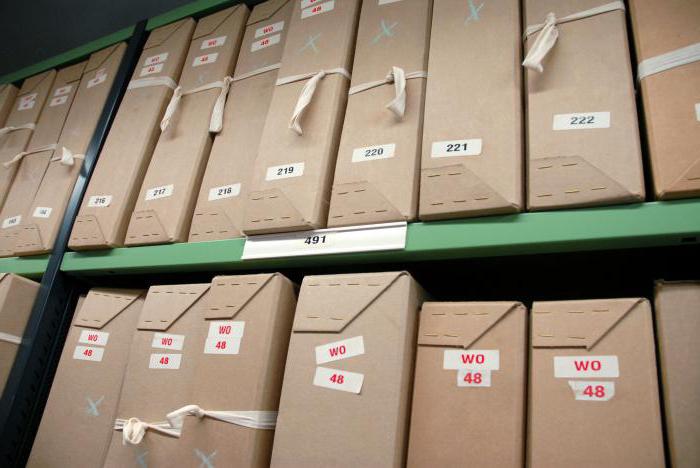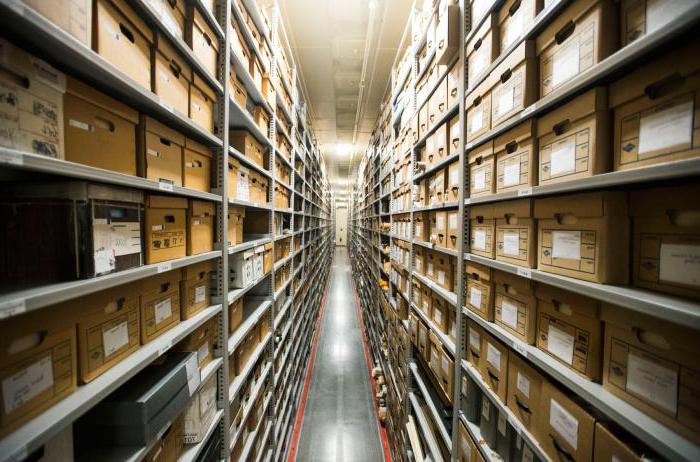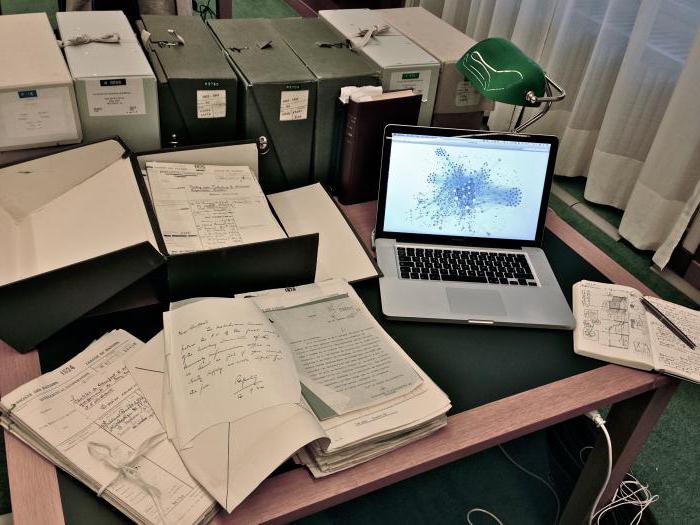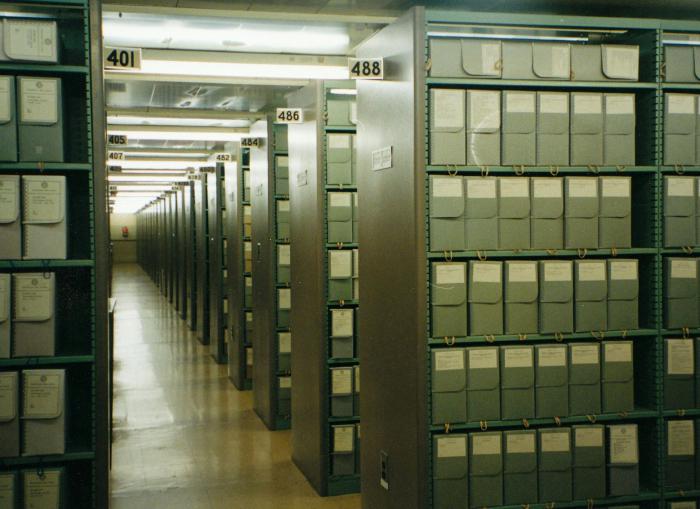The vital activity of not a single organization, company, enterprise, and even the state is impossible without streamlined workflow. Documents, as well as the need for their movement, creation or receipt before return, expiration or attachment to the case, have firmly entered the life of a person from the moment of writing. Preserved from ancient times, they confirm the documentation of various spheres of life of individuals or public affairs.

History of office work in Russia
The first documents that recorded the life of the ancient Russian state were the annals. They narrated about the agreements that were concluded between Russia and Byzantium, reflected historical events. Also diplomatic relations were noted in letters. In addition, they also spoke of various agreements, mainly between merchants. Letters, depending on the purpose, could be judicial and indicative.
All documents were written on parchment, which at that time was considered a very expensive material. Up to the end of the period of feudal fragmentation of Russia, it was too early to talk about the concept of office work as a system.

The history of office work in the Russian state consists of periods: pre-revolutionary, Soviet and post-Soviet.
Pre-revolutionary
Pre-revolutionary paperwork developed in the XVI - early XX centuries. This stage, in turn, is divided into several periods:
- Order clerical work began to take shape after the formation of a centralized Russian state. It was conducted in huts (ordered, labial, zemstvo) clerks. The system itself has developed in orders - central institutions. Hence the name of the period. A distinctive feature of clerical clerical work is the emergence of a separate “staff” of people who were involved in preparing projects, making inquiries, organizing the storage of papers, copying drafts.
- College workflow developed after the reform of the central administration. The colleges began to use registration books and organized archives. The storage of documents in the prescribed manner was first organized precisely during the period of college office work.
- Executive (in the XIX - early XX century.) Was developed during the reform. The new administrative system is based on the principles of unity of command - the exact execution of orders of executives, as well as hierarchy - a strict distribution of responsibilities between officials of various ranks and positions.
Soviet clerical work
Soviet office work began to take shape from October 1917 and continued until 1991. During this period, the authorities sought to make this system as rational as possible. Attempts have been made to introduce standards in working with official documents. A list of typical management documents at the enterprise has been compiled, which has set the storage period for such documentation. In the seventies, a unified state system of office work was specially created, which established uniform forms and methods of working with documents.
Post-Soviet
Office work of the post-Soviet period has developed since 1991, and is developing to the present. In the 90s of the twentieth century in the Russian Federation began to improve the legislative and regulatory framework establishing the requirements for documentation.
Storage of documents at the enterprise
In the process of activity of firms, institutions, enterprises, there is a huge flow of documents, papers are received and created. When the need for their use in daily activities to resolve current problems and issues disappears, there is a need for the accumulation and preservation of information. In addition, it is extremely important to ensure easy and quick access to the necessary data at any time, even after a few days, months or years after the paper goes out of circulation. If the archives are not properly organized and the deadlines are not respected, further problems may arise with finding the right paper. A quick search and application of documents for their intended purpose is possible only with a clear distribution of them into groups, segregation, for example, in business.

A special systematizing reference book, which determines the procedure for the distribution of securities in cases, is the nomenclature of cases.
The concepts of “nomenclature of affairs” and “business”
The nomenclature of cases is called the simplest classifier of case names, which allows you to quickly sort papers for quick search if necessary, indicating the shelf life in the prescribed form. Such a classifier is of great importance in organizing the smooth operation of a company or municipal institution.
A case is a document placed under one cover or a combination thereof that relates to a specific issue or type of activity. In cases, it is prohibited to duplicate draft versions of securities that are repeated or have lost importance, with an expired standard shelf life.
Nomenclature of affairs - a multi-purpose document that:
- It is the basis for placing documents in folders, searching for necessary papers.
- Indicates the indexing of documents and cases.
- Defines the shelf life of documents.
- It is a kind of manual for the first stage of examination.
- It is a document that takes into account temporary (up to ten years) storage.
- It is the basis for the formation of inventories of documents that will be stored permanently and temporarily.
- It is a place of storage of acts for the destruction of the affairs of an enterprise with expired storage periods (paper destruction).
Types of items in enterprises
There are three types of nomenclatures. A standard nomenclature is a regulatory document establishing the composition of cases that are instituted in the clerical work of organizations of the same type.
The approximate nomenclature is advisory in nature; it establishes a certain set of cases (with an indication of their indices) that are initiated during the functioning of organizations to which the nomenclature applies.

A separate nomenclature of the affairs of a particular enterprise is formed by the staff of document support and document management of the organization. The process involves the heads of structural divisions, as they have an idea of the planned development of the enterprise, which allows you to effectively provide for the types of securities that may appear in the organization in the near future.
Basic rules for storing documentation
A huge number of papers, various in terms of represented value and significance, are formed in the process of any enterprise. The types of securities for which storage of documents in the organization should be organized, the procedure and storage periods are reflected in various regulatory legal acts, which may relate to both the corporate legislation of an individual organization, the legislation on archiving, and the accounting laws. Laws on accounting and archiving are equally valid with regulations issued by the constituent council or the leadership of a particular organization.
The basic legislative act in this area is the law "On Archival Affairs in the Russian Federation", which entered into force on the date of publication - October 25, 2004.It is this legislative act that regulates various kinds of relations in the field of archival management in the interests of the civilian population of the country, society and government, as well as relations in the organization of storage of papers, regardless of the form of ownership of enterprises.
Based on h. 1 Article. 17 of Law No. 125-ФЗ, entrepreneurs, private and state organizations are obliged to preserve archival documents during the periods of their storage, including paper on personnel. Depending on the status of the commercial enterprise, the procedure for fulfilling the obligation to store securities and the period of storage of documents in the organization are established. Commercial institutions have the right to terminate the storage of documents upon expiration of time.
Accounting documents
Article 17 of the Law No. 129-ФЗ establishes the general storage periods for documents, accounting papers and accounting reports. According to the act, the enterprise is obliged to ensure the storage of accounting documents for at least five calendar years from the first of January of the year following that to which the paper is dated.

To determine the terms for specific types of documents, you need to refer to such an act as a standard list of document storage periods approved by the Federal Archives on October 6, 2000. What is important, the dates indicated in the list do not start from the date of the final version of the paper or the official publication of the document, but from the first of January of the next calendar year. However, if the head of the company issued an order taking into account the specifics of the activity, then the shelf life of the papers can be increased compared to the period that sets the list.
Tax returns and other tax calculation papers
The time period during which an enterprise or a municipal institution is required to maintain tax deduction reporting is established in paragraph 170 of the above list. So, the period of storage of documents in the organization, when it comes to tax returns for the last calendar year, is at least a decade, quarterly are stored for at least five subsequent calendar years, monthly periods must be stored for at least one calendar year - this information is indicated by the list of document storage periods. In the absence of reporting for the calendar year, other types of declarations shall be kept for at least ten years. So, other types of reporting should be protected for at least five calendar years. Reports for a calendar month in the absence of quarterly reports are stored according to the same principles.
Documents due to which taxes and fees are calculated are not defined in the law. However, the subparagraph of the eighth paragraph of the first article 23 of the Tax Code of the Russian Federation indicates that taxpayers must keep documents for four years: accounting and tax records, any other documents proving profit, spending, payment and withholding of tax and other fees. The same sets the list of documents indicating the storage period. It is posted on the official websites of the government of the Russian Federation and Rosarchive.
Duration of storage of documentation at the enterprise
The shelf life of documents is the time frame defined by the legislation of the Russian Federation and the values selected by the examination, during which they must be stored until their destruction.
As a result of the activities of enterprises and institutions, papers of different meanings are created. A standard list of document storage permits the destruction of documents that have already completed the task. But there are those who do not lose their importance for a number of years. And the third type, it contains scientifically or practically significant information. This type has a constant shelf life.
So, typical storage periods for documents can be:
- temporary up to ten years;
- temporary over ten years;
- permanent.
In divisions that are engaged in reference work, cases remain for two years, regardless of the status of the business: permanent and temporary (over ten years) storage. In the archive of the organization they are surrendered after this time.

Regardless of the form in which the documentation is made (paper or electronic), the storage periods of documents do not change. The determining value of the duration of their use depends on the information contained in them. This issue is the examination of value.
An examination of the value of documents is the establishment of significance on which the determination of the period of their saving depends. An examination is carried out to determine which particular papers can best provide the state, society, science and individuals with the necessary data. For documents that have been selected for temporary storage, you should determine for how long in the future they may be needed. An important task of the examination of securities is also considered to determine the period of storage of documentation.
Thus, the following tasks of the examination of value stood out:
- Transfer for permanent storage to the state archives of the Russian Federation of documentation that is important for politics, economics, economy, science, culture of the country, preliminary selection for this.
- Documents that retain practical value, but do not represent scientific and historical value, are selected for temporary storage.
- Those that have lost their value and have no scientific value are selected for destruction.
- Establishment of storage periods for documents, changing them.
During the examination, the quality of the organization of the nomenclature of files, archives and the establishment of the shelf life of documents are also checked.
Ways of organizing the storage of securities at the enterprise
With the advent of electronic technology, there is no need to use an entire building for archives; several rooms will be enough if it is a large organization with a ten-year history. But in any case, there is a need to organize the storage of documents in the organization.
There are several options for how you can organize an electronic archive:
- Local - an affordable way of storage, which consists in collecting documents in one folder on a computer or, if the company has a local network, creating a special network folder and setting access rights to it. The disadvantages of this storage method are the lack of security guarantees, the need to independently control the storage time, provide viewing tools (we are talking about programs for viewing documents, images, videos, drawings and other papers) and verification of electronic signatures.
- Special electronic archive - specialized electronic document management systems or electronic archives. Such storage systems do not repeat the above disadvantages of the local archive. That is, the EDMS provides viewing, controls the timing of the storage of securities, allows you to obtain information about the electronic signature. Minus - the service is paid.
- In the cloud - a promising way to store documents, they can be stored directly in the online service and do not take up space on the computers of the organization. Employees always have the opportunity to turn to the necessary documentation, the service will provide viewing with appropriate tools and provide data on a security certificate - there would only be access to the network.

The legislation does not regulate which storage method should be used. The list of documents with the dates indicates only the regulatory time frame. It is only important to comply with the rules for the transfer of documents, the correct form of execution and a certificate for signature.